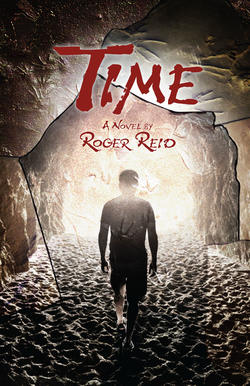Читать книгу Time - Roger Reid - Страница 12
На сайте Литреса книга снята с продажи.
6 Evidence of Living
ОглавлениеOn the flight to Birmingham, I reread some of the first article Leah sent me about the fossil site. The article described the discovery of fossil footprints at a coal mine by a man who was, at the time, a middle school science teacher in Oneonta, Alabama. His name was Ashley Allen.
Here is an excerpt from the article.
. . . That fall, early in the school year, Ashley Allen was orienting his Oneonta, Alabama class to the year ahead when one of his students did something unusual for a seventh grader: he volunteered. Mr. Allen mentioned that he hoped to take a fossil hunting field trip during the year and that coalfields were often good spots for finding fossils. Student Jessie Burton volunteered that his grandmother owned a coal mine.
“It was significant that Jessie’s grandmother owned the mine and the mining company,” says Ashley Allen. “She was able to give me permission to scout the property—no bureaucracy, no red tape, no lawyers limiting liability.”
Delores Reid, Jessie Burton’s grandmother and owner of the New Acton Coal Mining Company, made the arrangements for Allen to visit the Union Chapel Mine a few miles south of Jasper, Alabama. Billy Orick, Permits Manager for the mining company, met Allen on the fringes of the site and drove him to the top of a ridge that overlooked what was then a working strip mine.
Allen was a bit overwhelmed as he stepped from Orick’s truck. He thought he had come prepared in his fossil hunting regalia: wide brim hat, safari vest, trekking boots. In one hand he held a hammer, in the other, a chisel. He stood alone at the top of the ridge, surveyed the site and wondered. To the south and east the ground fell away from him at a steep angle for more than a hundred yards. Then it plunged into a gully for another thirty or so feet. From the bottom of the gully, a sheer rock wall shot straight up more than one hundred feet. Orick had told him the mining crew had seen more fossils at Union Chapel than at any other of their mining sites, but Allen wondered if this site might be too treacherous for his students. Piles of jagged rocks—the spoils of strip mining—littered the landscape that dropped away before him.
Allen drew a deep breath and took his first tenuous steps down into rocks that had not seen the light of day for more than 300 million years. Beneath his feet the rocks wobbled and slipped with every move. He could not lift his eyes from the ground beyond each step he would take. But it was enough. There in the bright, autumn sun he saw it. His fossil hunter’s dream: evidence of living.
As a kid growing up in Florida, Allen made his first fossil find in high school. It was a shark’s tooth. Shark teeth are not uncommon, as fossils go in the southeastern U.S., but this one was Allen’s treasure—there’s something about holding a relic in your hand that is millions of years old. When he entered Livingston University (now the University of West Alabama), he took his treasure with him. At Livingston, he took his prized possession and showed it to geology professor Richard Thurn. It would have been easy for Professor Thurn to dismiss so common a find as a shark’s tooth. Perhaps it was Allen’s enthusiasm, perhaps Professor Thurn is a great teacher, probably both, but the professor seized the opportunity. He encouraged the young student to keep looking. Alabama is one of the most fossil-rich areas of North America, he told Allen. And then he threw out a challenge.
“Fossil footprints,” said Thurn. “Fossil footprints are among the great quests of geologists and paleontologists across the globe. In the footprints of ancient creatures you find more than evidence of their having lived; you find evidence of living.”
The professor’s words inspired Allen to change his minor from chemistry to geology. He continued his major in biology and became a high school science teacher. Teaching in Oneonta, north of Birmingham, put him in the heart of Alabama coal mining country. And it put him within an easy drive of the Birmingham Paleontological Society (BPS). As a regular member of the BPS, Allen continued in the love of fossil hunting inspired by Richard Thurn.
Professor Thurn’s words resonated in his mind as Allen gazed down upon his first discovery at the Union Chapel Mine, “Evidence of living.” There they were: tracks. Tracks from millions and millions and millions of years ago. Ashley Allen shouted out an exclamation that in modern times might only be uttered by a high school teacher. He shouted, “Yahoo!”
This initial evidence of daily life in the 312-million-year-old Alabama rock came in the form of invertebrate tracks. Within minutes of his first find, Allen discovered another invertebrate trackway. Moments later, a long, flat, layered rock caught his eye. He placed his chisel between the layers and with a simple pop of his hammer the rock opened up. Drawing back his tools, Ashley Allen knew beyond all doubt he was someplace special. There, revealed before him, were three distinct tracks of footprints made by ancient amphibians, and a world once lost was newly found.
The pilot announced that we were beginning our descent into Birmingham, and we should put our seat backs and trays in the upright position. The fall through the clouds was bumpy, and when we dropped out beneath them it looked like we were right on top of the airport. I could see the terminal. Leah would be in there somewhere. I wondered if she was watching the plane fall from the sky and bounce twice across the runway.
